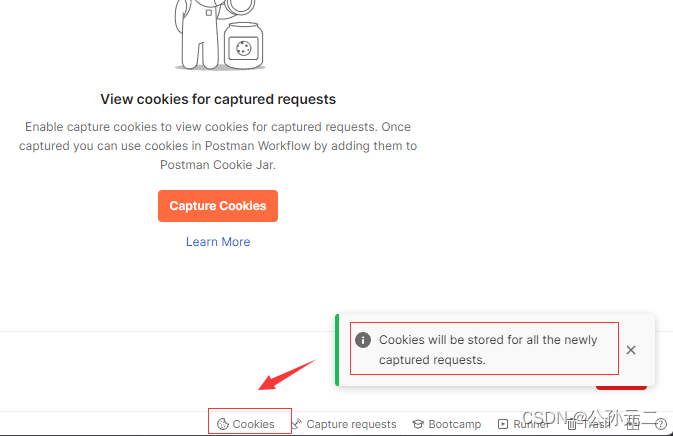

On hover, the timeline breakdown can be analyzed.
POSTMAN INTERCEPTOR CODE


On the right side of the response bar, the user can see the following response metadata: Test results – this will be discussed in detail in the next article as well.Body – response body data that can be formatted depending on the response type.Cookies – user can either set cookies or check the ones that are automatically set.Settings – fine-grained request properties related to redirects, certificate verification, etc.Pre-request scripts & Tests – this will be discussed in detail in the next article.Body – request body can be sent in the following forms:.Besides custom headers that can be added, Postman is automatically setting necessary headers as well. All major authentication protocols are supported (API keys, bearer, OAuth, etc…). Authorization – authorization methods for the given request.If these params are already set via URL, they will be automatically shown in this tab as well. Params – key-value pairs of query parameters. Besides HTTP verb and URL, the request section has the following elements: More info and API documentation can be found at Request and response anatomy

Info: Examples in this article are using Restful-booker API, created by Mark Winteringham. After we hit the Send button, we can see a Sending request message in the lower section of the tab, and after a few seconds, voila, our first request is made! Now, let’s leave the default GET method and set the following URL. The request tab has six primary elements: Once this is done, let’s click Add a request to create our very first request. Now let’s create our very first workspace by clicking on Workspaces -> Create Workspace.Īfterward, we can create a collection for our requests by clicking on Create collection button on the left side of the screen. We can understand the workspace as a project, and collections as folders for requests. Within the workspace, we can create a collection, a set of related requests grouped together. Workspace is a logical area that separates different projects for the same user, as well as artifacts related to that project: requests, collections, APIs, (local) variables, etc. Before we launch our first API call, let’s clarify two fundamental organizational terms in Postman: workspace and collection. ability to sync all your postman data across multiple devices.There are two main benefits of a Postman account: I personally have never found the use case for Postman from the browser, but it’s good to be aware of it in case you find it useful.Īnother useful step in Postman setup would be the creation of the (free) user account. Also, if you want to use the browser version, you will have to say goodbye to the “find and replace” feature, certificates and proxy manipulation as well as the Postman interceptor. Be aware that usage of Postman from the browser requires installation of the desktop agent in order to overcome browser CORS limitations. Postman can also be used directly from the browser. Postman is available as a native application for Linux, Mac, and Windows.
POSTMAN INTERCEPTOR SERIES
In this series of articles, I’ll try to expand the knowledge and maximize the value which Postman can bring to your daily work.
POSTMAN INTERCEPTOR FULL
Nevertheless, a lot of engineers are not utilizing the full potential of Postman due to a lack of knowledge and tremendous evolution of the tool during the past couple of years. Today, Postman is much more than a simple Rest API client, with a huge community, excellent support, and a variety of features for the development and testing of web APIs. From a side project for API testing to an API platform used by more than 17 million developers, Postman has come a long way.


 0 kommentar(er)
0 kommentar(er)
